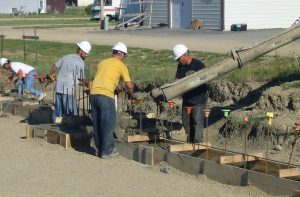A new building process that uses only a 3D printing extruder, rocks, strings, and smart design, and which experts say may revolutionize temporary architecture, is being shown off at the Chicago Architecture Biennial.
The process called Rock Print, has been developed under a partnership between the Self-Assembly Lab at Massachusetts Institute of Technology (MIT), and Gramazio Koeler Research (GKR). It is virtually an alternative to concrete that doesn’t require explosives or jackhammers to remove.
MIT’s Department of Architecture Research Scientist Skylar Tibbits says the process involves ” jamming rocks together with algorithmically placed string”.
“We are using a similar technique to powder-based printing. There is a container, material is deposited layer by layer and a ‘binder; in this case the string, is applied to each layer in the specific pattern of the slice.” he says.
Andreas Thoma, GKR’s project installation head says,. “When structures are aggregated from crushed gneiss, we get load bearing structures that can withstand enormous forces.” which can be shaped into a wide range of designs. Thoma says the real value of Rock Print is that when you want one of your structures to be gone, you just virtually “wind the string up, pack up the rocks, and it’s like it was never there”.
“The ability to digitally fabricate, disassemble, and reassemble structures with no material losses changes the paradigm of architecture as well as the view of permanent / temporary architecture,” says Thoma.
GKR and MIT have been testing materials, string patterns, and fabrication methods since 2014, but the idea behind the process dates back to 2011. Thoma says it was back then when Chicago University professor Dr. Heinrich Jaeger hosted a meeting of architects, physicists and material scientist to explore the possibilities of the “jamming phenomenon”, which is what happens on a physical level when “you cram a bunch of stuff into one spot”. MIT and GKR joined forces at the conference.
Thoma says, “This is the beginning of the research and a step towards an alternative to concrete.”
Stay Connected